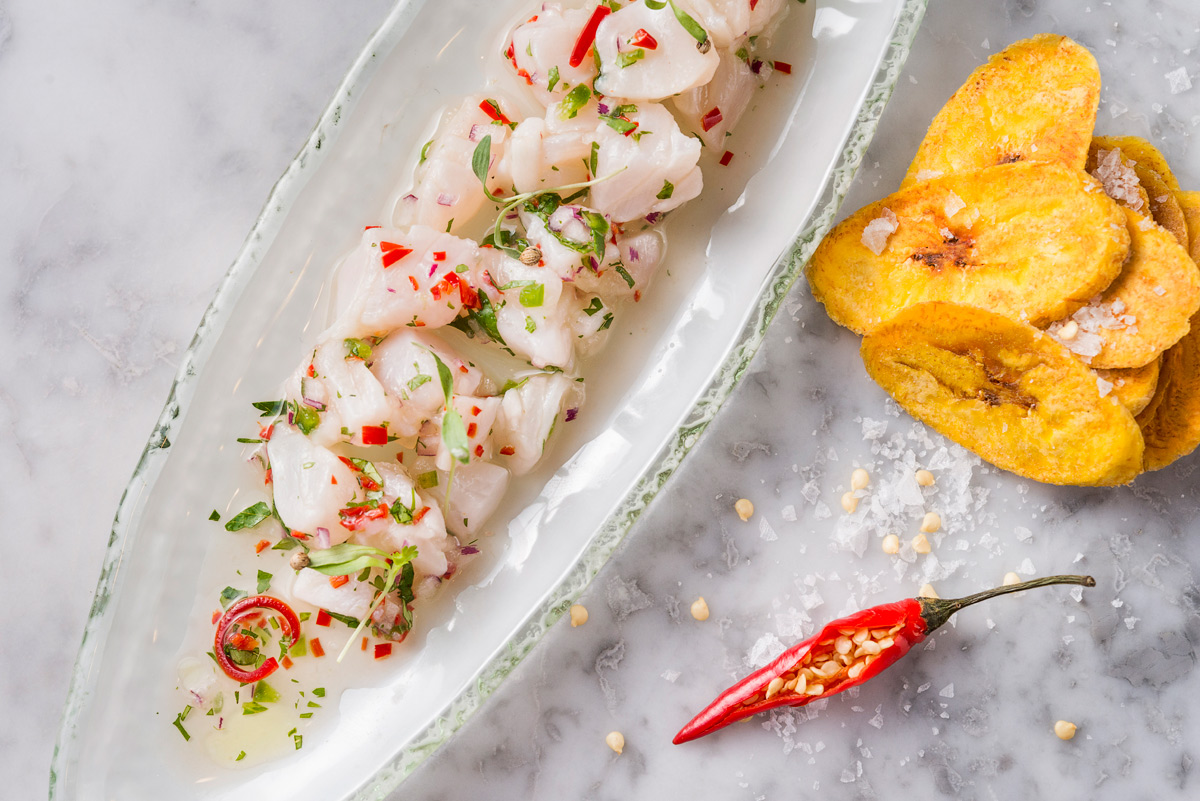Asia de Cuba Returns with Sugar and Spice
Executive Chef Luis Pous discusses blending cultures and flavors in the reborn NYC restaurant


A little over three months ago Asia de Cuba not-so-quietly returned to New York City. A longtime midtown favorite, envisioned by Jeffrey Chodorow, the restaurant closed in 2011 only to return years later downtown. Chodorow’s vision—now meticulously executed by Executive Chef Luis Pous—was and remains Asian-influenced Cuban food. And, at this new location, the focus is most certainly incredible, innovative dishes across five main sections: ceviches, small plates, salads, wok and plancha. Pous, who was born and trained as a chef in Cuba, recalls his memories of Havana’s Chinatown—and it’s these memories and his vision that make the food and drink at Asia de Cuba a worthwhile visit.

“Inspiration comes in a lot of different forms, but my main starting point is simplicity,” Pous explains to CH. “I like things to be three ingredients—that way you don’t get lost. First, you have to ask if it is going to be acid-based, or sweet-based, or savory.” From there, he seeks to reinvent. A common dish in Cuba, black beans and rice, was an initial inspiration. “How can we make rice and beans, without being traditional?” he asks. Traditionally, the juice from the beans lends color to the rice in his native cooking. Pous proposed starting with black Japanese rice, and preparing the dish in a wok. The result was liberating. Pous couples this with everything from chili-rubbed scallops and aioli to edamame and grilled corn. The rest of the menu plays host to everything from honey-soy-glazed chicken chicharrones to mojo duck confit. Spice also makes its presence felt in most dishes.

Pous doesn’t stop with food; the restaurant’s cocktail menu has been designed to partner with perfection—and it employs one special machine: a sugar cane juice extractor. This very rare item directly impacts two of their standout cocktails, the mojito and the cubano. “The mojito, in Cuba, uses white refined sugar,” Pous explains. At Asia de Cuba, a stick of sugar cane is placed into a press and a viscous, delightful juice is emitted. It lends their mojito a vibrancy and freshness not found elsewhere.
As for the second drink, Pous shares a story from his childhood. “My family used to work on a sugar plantation back in the day. When I used to go as a kid and see them, people were drinking Aguardiente—the first distilled alcohol from the sugar. They would mix it with juice and a little bit of coffee to make it dark. I said, ‘Let’s make that a drink here and let’s call it a Cubano.'” The result is rich and flavorful and packs quite a punch.

“The idea is complicated, but the execution is very simple,” Pous says. “Chinese food is popular everywhere in the world. From a Cuban background, it’s more about what Chinese people were doing in Cuba, after immigrating, before 1962. Back then, a fusion developed. My vision is, what if that style had progressed until today.” This fusion applies to both food and drink, and delivers tastes most haven’t explored before. While the menu may appear complicated to navigate, for those who aren’t really sure what to expect, it’s designed to be shared and trying a little bit from every section delivers the maximum impact.
Asia de Cuba is located at 415 Lafayette Street, New York City.
Images courtesy of Asia de Cuba












